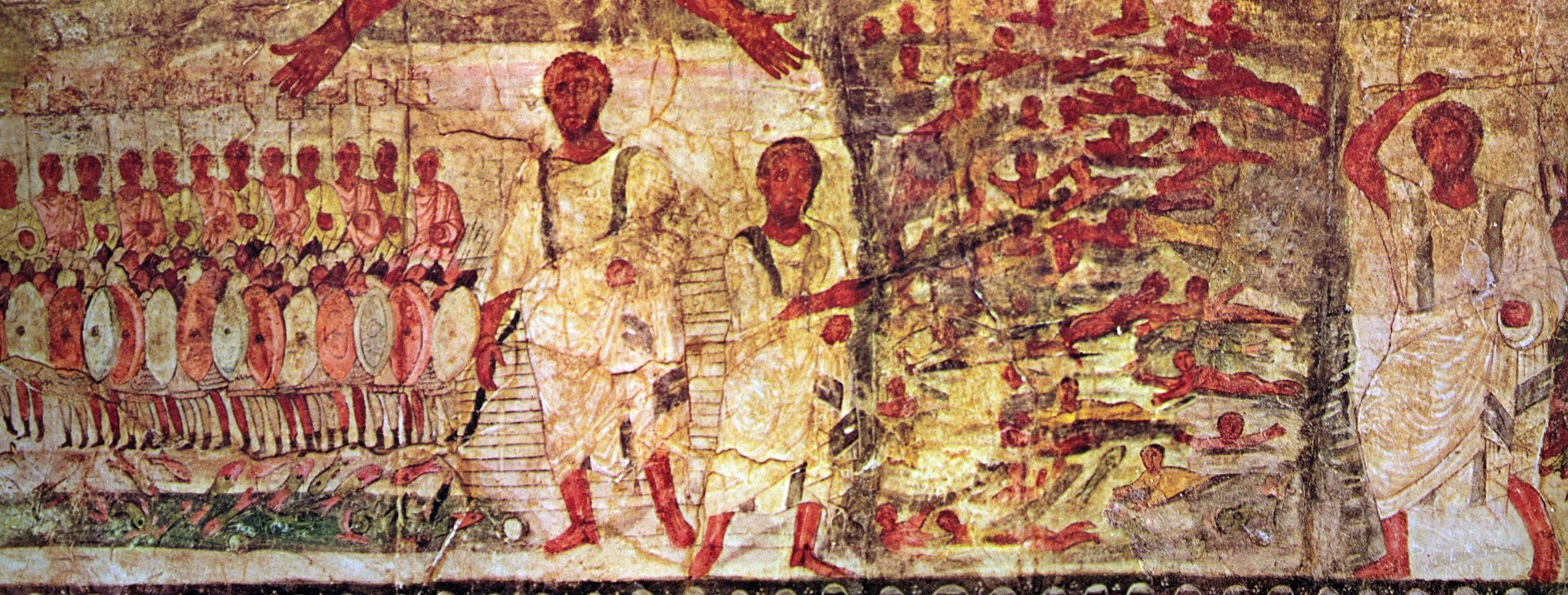“Moses when he went up from Egypt and split the sea,” Dura Europos synagogue (photograph by Fred Anderegg, after E. R. Goodenough, Jewish Symbols in the Greco-Roman Period)
Significantly, “Moses when he went up from Egypt and split the sea” parallels Jewish Aramaic biblical paraphrases, targumim from both Babylonia and Palestine of roughly the same period, and so is confluent with that literary tradition.
The majority of Aramaic inscriptions at Dura are from the synagogue, and this “Jewish” square script appears only in the synagogue inscriptions, in the Hebrew liturgical text, and in a Jewish marriage contract discovered at Dura.
According to the Hebrew Bible, Moses was a former Egyptian prince who later in life became a religious leader and lawgiver, to whom the authorship of the Torah is traditionally attributed. Also called Moshe Rabbenu in Hebrew, he is the most important prophet in Judaism.
